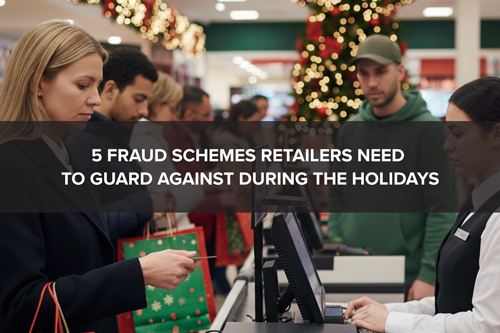 Retailers are ramping up for the holiday shopping season, but unfortunately, these crucial few weeks that can help businesses end the year strong are also a period of increased retail fraud. Last year, research from Socure found that 13 percent of Americans participated in fraud schemes. Even more concerning, 40 percent of Gen Z committed fraud over the holidays, suggesting this is a trend that’s only going to worsen in the future.
Retailers are ramping up for the holiday shopping season, but unfortunately, these crucial few weeks that can help businesses end the year strong are also a period of increased retail fraud. Last year, research from Socure found that 13 percent of Americans participated in fraud schemes. Even more concerning, 40 percent of Gen Z committed fraud over the holidays, suggesting this is a trend that’s only going to worsen in the future.
VARs and ISVs can add real value to the solutions and services they provide by educating retailers on the latest fraud schemes and helping retailers implement solutions to mitigate them.
Common Risks in the Fraud Scheme Threat Landscape
Talk to merchants about these types of retail fraud, how they’re impacting their businesses, and the solutions you can offer to decrease their losses.
- Friendly Fraud
One trending and potentially very damaging retail fraud scheme is “friendly fraud.” It involves shoppers disputing their own purchases. They’ll say they didn’t purchase an item, claiming that an unauthorized person used the payment card or that they never received an item purchased online. They could falsely claim the product was damaged or that it didn’t live up to the online description to get their money back. Often, they’ll request a chargeback from a bank rather than trying to get a refund from the retailer. Keep in mind that too many chargebacks can result in a retailer having to pay higher fees to process payment cards.
Working with a company that monitors transactions can help identify patterns and flag suspicious activity. This will allow the merchants using your solutions to spot and stop high-risk activity.
- Return Fraud
Shoplifting items and then returning them for cash is another form of retail fraud that merchants must be on guard against. Fraudsters might attempt to use fake receipts or argue that they lost their receipts.
Beyond creating a secure environment with a security system and where sales associates can monitor shoppers’ activity, retailers can combat this type of fraud with strong return policies. They should insist on receipts or keep digital receipts and require authentication to complete a return. Also, advertising return policies in the store, online, and on receipts will let shoppers know the retailer will never give cash for returns.
- Price Tag Switching
Some fraudsters will take the tag from a low-priced item and put it on a higher-value item. This scam is usually only effective with self-checkout, where a cashier or sales associate can’t check that the name that comes up on the screen matches the item purchased.
You can help retailers eliminate this type of fraud with tamperproof labels that can’t be switched. You can also offer AI-powered product ID at checkout that recognizes products and flags discrepancies when a shopper scans them at the self-checkout.
- Insider Threats
Employee theft of cash or inventory can be a difficult form of retail fraud or theft to combat. Sweetheart deals where the employee charges less for friends and family, avoids scanning the barcode, manually overrides the price, or opens the drawer with voids or returns can lead to big losses. Employees could also defraud their employers by making gift cards without paying for their friends or themselves.
A strong point of sale (POS) system can help retailers fight this by locking down high-risk actions only to authorized employees. Integrating cameras with the POS system allows retailers to match POS data with video of what occurs at the terminal, providing a deterrent and aiding in investigations if the worst happens.
- Credit Card Fraud
This is the most familiar of the fraud schemes, but each year it appears in different ways.
Skimmers were used in the past on in-store card readers that could steal data from a card’s magstripe. With EMV payments, it’s less common now. But now, fraudsters are using “shimming,” where a device is implanted in a card terminal slot that records data from a card’s microchip. The biggest potential for shimming is with unattended payments in devices like parking meters, ATMs, gas pumps, and vending machines.
Because fraudsters use or sell stolen card data for online purchases, the most effective way to counter this retail fraud scheme is for merchants to authenticate each transaction with additional factors, like CVV and ZIP code.
Put an end to Holiday Fraud Schemes
The Socure research found that most people who committed fraud in 2024 said they did so because they got away with it in 2023. Help merchants break the cycle and stop retail fraud this year.
Fraud doesn’t have to be a cost of doing business. ISVs and VARs can offer solutions that decrease losses and help retailers avoid a high-risk designation from chargebacks that increases processing fees. But the ROI on security solutions also includes securing the brand’s reputation as a legitimate and safe place to shop.
Datacap can help. Contact us to learn more about technology that helps mitigate fraud and helps ISVs and VARs provide more value to merchants.



